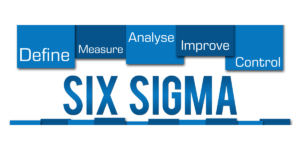Do you have financial goals for the upcoming year but struggle to make them a reality due to budget constraints? If so, you’re not alone. Many people find it challenging to stick to a budget and save money for the things they truly want. However, with the right budgeting strategies, achieving your financial goals in 2023 is within your reach. In this article, we’ll share ten practical and effective budgeting strategies that can help you save money, reduce debt, and achieve your financial goals. Whether you’re looking to save for a down payment on a house, pay off student loans, or take a dream vacation, these strategies will help you stay on track and make the most of your money. So, let’s dive in and discover how you can take control of your finances and achieve your goals in 2023.
Why Budgeting Is Important
Budgeting is the process of creating a plan for your money. It involves tracking your income and expenses, setting financial goals, and making adjustments to your spending habits to achieve those goals. Budgeting is important because it helps you stay on top of your finances, avoid overspending, and save money for future expenses. Without a budget, it’s easy to lose track of your spending and end up in debt.
One of the biggest benefits of budgeting is that it can help you achieve your financial goals. By creating a plan for your money, you can prioritize your spending and make sure you’re putting your money towards the things that matter most to you. Whether you’re saving for a down payment on a house, paying off debt, or building an emergency fund, a budget can help you stay on track and make steady progress towards your goals.
Another benefit of budgeting is that it can reduce stress and anxiety around money. When you know exactly where your money is going and have a plan for your expenses, you can feel more in control of your finances. This can help you reduce financial stress and improve your overall well-being.
Assessing Your Current Financial Situation
Before you can create a budgeting plan, it’s important to assess your current financial situation. This includes understanding your income, expenses, and debts. To assess your income, gather all of your pay stubs for the past few months and add up your total income. If you have any additional sources of income, such as rental income or freelance work, make sure to include those as well.
Next, assess your expenses. This includes everything from rent and utilities to groceries, transportation, and entertainment. To get an accurate picture of your expenses, track your spending for a month or two using a budgeting app or spreadsheet. This will help you see where your money is going and identify areas where you can reduce your spending.
Finally, assess your debts. This includes credit card debt, student loans, car loans, and any other loans you may have. Make a list of all of your debts, including the balance, interest rate, and minimum payment. This will help you prioritize which debts to pay off first and create a plan for reducing your debt over time.
Setting SMART Financial Goals
Once you’ve assessed your current financial situation, it’s time to set SMART financial goals. SMART stands for Specific, Measurable, Achievable, Relevant, and Time-bound. This means that your goals should be specific and clearly defined, measurable so that you can track your progress, achievable so that you don’t get discouraged, relevant to your overall financial situation, and time-bound so that you have a deadline to work towards.
For example, a SMART financial goal might be to save $10,000 for a down payment on a house in the next two years. This goal is specific, measurable, achievable, relevant, and time-bound. It gives you a clear target to work towards and a deadline to keep you accountable.
When setting your financial goals, make sure to prioritize them based on what’s most important to you. This might include paying off debt, saving for a down payment, building an emergency fund, or investing for retirement.
Creating a Budgeting Plan
Now that you’ve assessed your current financial situation and set SMART financial goals, it’s time to create a budgeting plan. This involves creating a spending plan that aligns with your goals and helps you prioritize your expenses.
One popular budgeting method is the 50/30/20 rule. This rule suggests that you allocate 50% of your income towards essentials, such as rent, utilities, and groceries, 30% towards discretionary spending, such as entertainment and dining out, and 20% towards savings and debt repayment.
To create a budgeting plan, start by listing all of your income sources and expenses. Then, allocate your income towards your expenses based on your priorities. Make sure to leave some room for unexpected expenses and adjustments to your budget over time.
The 50/30/20 Budgeting Rule
The 50/30/20 budgeting rule is a popular budgeting method that can help you allocate your income towards your expenses and savings. The rule suggests that you allocate 50% of your income towards essentials, such as rent, utilities, and groceries, 30% towards discretionary spending, such as entertainment and dining out, and 20% towards savings and debt repayment.
Essentials include expenses that are necessary for your basic needs, such as housing, food, transportation, and healthcare. Discretionary spending includes expenses that are not necessary for your basic needs, such as entertainment, hobbies, and dining out. Savings and debt repayment include expenses that help you save for future goals or pay off debt, such as retirement savings, emergency fund savings, and debt payments.
To use the 50/30/20 budgeting rule, start by calculating your after-tax income. Then, allocate 50% of your income towards essentials, 30% towards discretionary spending, and 20% towards savings and debt repayment. Adjust your budget as needed based on your priorities and financial goals.
Saving Money on Expenses
One of the most effective ways to stick to your budget and achieve your financial goals is to save money on expenses. This involves finding ways to reduce your spending on essentials and discretionary spending.
To save money on essentials, consider ways to reduce your housing, transportation, and food expenses. This might include downsizing your home, using public transportation, and cooking at home instead of eating out.
To save money on discretionary spending, consider ways to reduce your entertainment and shopping expenses. This might include finding free or low-cost activities, shopping second-hand, and using coupons and discounts.
Increasing Your Income
Another way to achieve your financial goals is to increase your income. This might include finding ways to earn more money through side hustles, freelance work, or a higher-paying job.
To increase your income, start by identifying your skills and strengths. Then, look for opportunities to use those skills in a way that generates income. This might include offering freelance services, selling products online, or starting a small business.
Remember that increasing your income is only effective if you also manage your expenses and save money. If you simply spend more as your income increases, you won’t make progress towards your financial goals.
Sticking to Your Budgeting Plan
One of the biggest challenges of budgeting is sticking to your plan over time. It’s easy to get off track and overspend on discretionary expenses or unexpected expenses.
To stick to your budgeting plan, try using a budgeting app or spreadsheet to track your spending and stay accountable. Set reminders for bill payments and savings goals to ensure that you stay on track.
Another way to stick to your budgeting plan is to make adjustments over time. Your financial situation and priorities may change, so it’s important to review and adjust your budgeting plan regularly. This will help you stay on track and make progress towards your financial goals.
Reviewing and Adjusting Your Budgeting Plan
Finally, it’s important to review and adjust your budgeting plan regularly. This involves tracking your spending, reviewing your goals, and making adjustments as needed.
To review your budgeting plan, start by tracking your spending for a month or two using a budgeting app or spreadsheet. This will help you see where your money is going and identify areas where you can reduce your spending.
Next, review your financial goals and make sure that your budgeting plan aligns with those goals. Adjust your budget as needed to ensure that you’re making steady progress towards your goals.
Conclusion
Achieving your financial goals in 2023 is within your reach with the right budgeting strategies. By assessing your current financial situation, setting SMART financial goals, creating a budgeting plan, saving money on expenses, and increasing your income, you can take control of your finances and achieve your goals. Remember to stick to your budgeting plan, review and adjust it regularly, and prioritize your spending based on what’s most important to you. With these ten budgeting strategies, you can make 2023 your most financially successful year yet.











